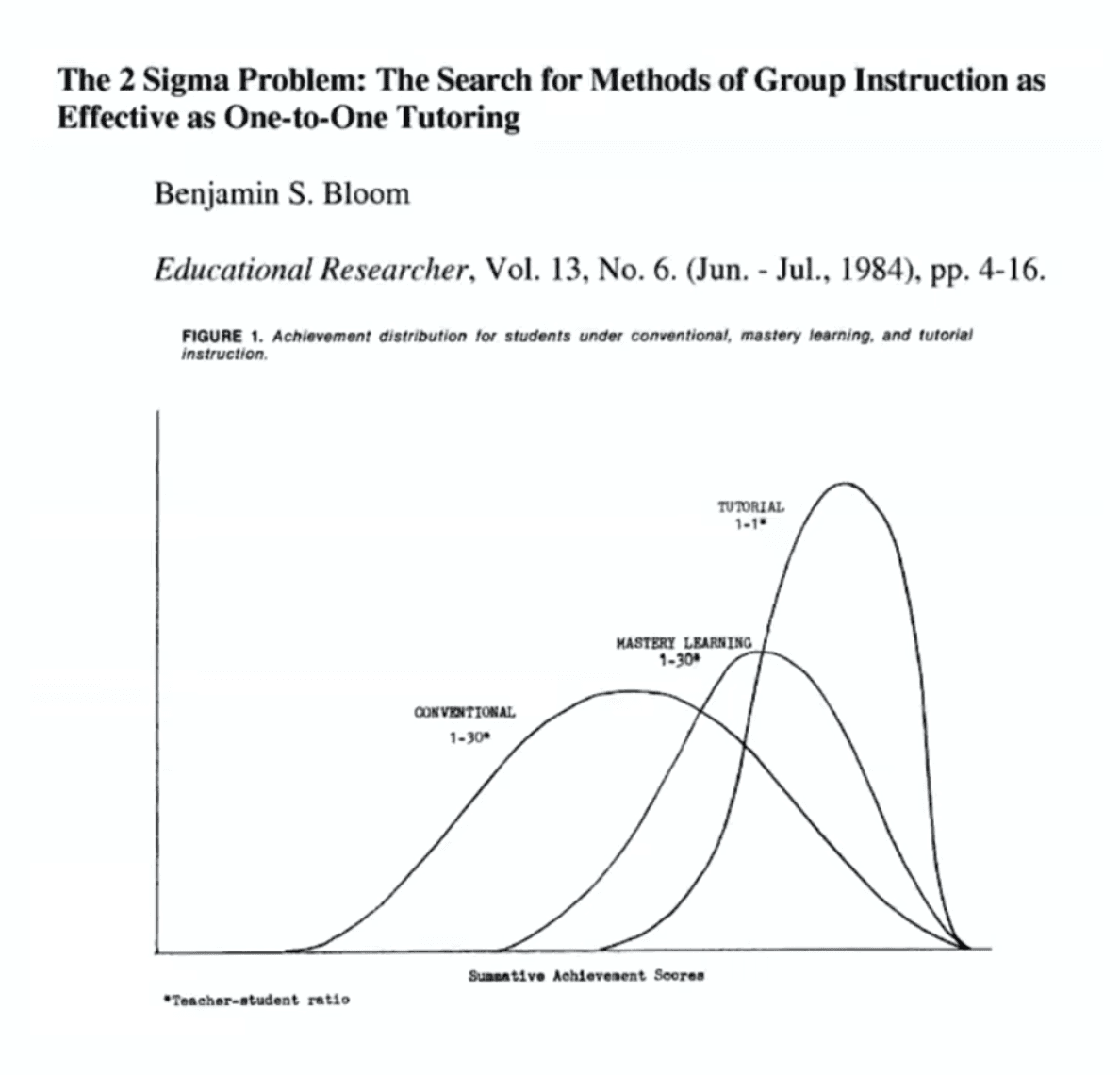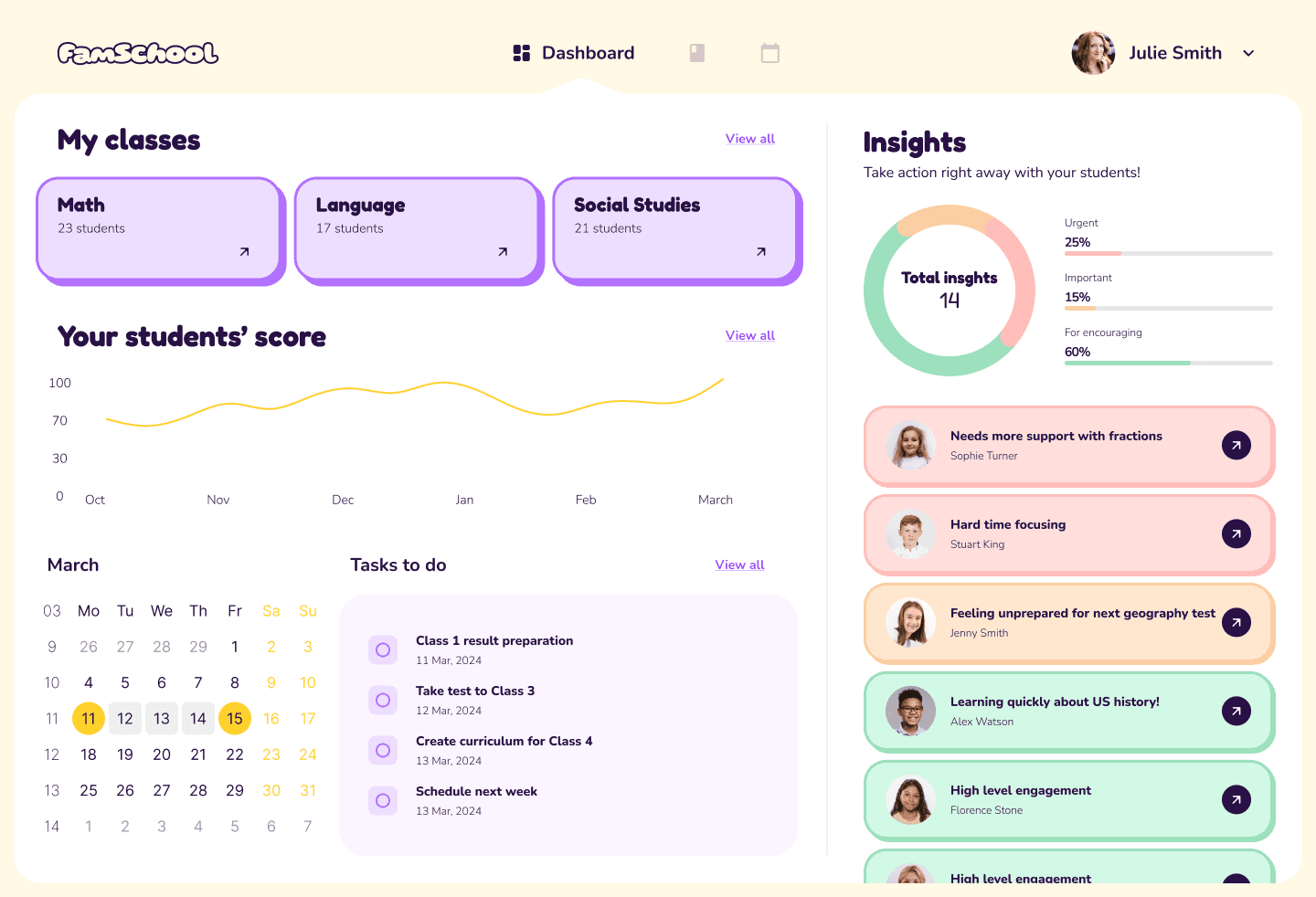Homeschooling is hard! As a homeschooling parent, you have to do everything that is usually managed by numerous teachers (each focusing on different subjects) and several supporting admin in a traditional school. But with the challenges of homeschooling come the opportunities for dedicated parents to provide a level of hands-on learning for their children that can lead to much more effective learning outcomes.

One of the most famous studies about different styles of educational instruction (see image above) showed that one-on-one tutoring style learning leads to significantly more effective learning and skill development. Along with being able to provide higher quality learning, homeschool parents told us about some of the other major reasons they choose this path:
Children too advanced for public school
Children may have learning difficulties that aren’t being addressed by teachers
Public schools teaching things that are misaligned with their family values
Distance to appropriate schools, cost of transportation, etc.
Challenges of Homeschooling Parents
After interviewing almost 30 homeschool families and a 400 person survey of homeschool parents across the US, we gather a ton of amazing insights about what are some of the hardest parts of homeschooling:
Resource research: homeschool parents deal with the task of researching and discovering diverse learning resources and engaging hands-on activities, doing this they struggle to tailor the homeschool journey precisely to their child’s educational aspirations and interests.
Curriculum: crafting a tailored curriculum that aligns with the specific needs, learning styles, and pace of each individual child to ensure a personalized and effective educational experience for them.
Assessment: assessing a child’s progress without relying on traditional grading systems or standardized tests, while ensuring accountability to state regulations (this is where the homeschool evaluator also helps?)
Time management: effectively managing time to balance teaching responsibilities, family commitments, and maintaining flexibility in the homeschool schedule.
Child socialization: ensuring that the child has opportunities for social interaction and development outside the traditional classroom setting.
US Homeschoolers: In the numbers
Homeschooling only consisted of around 3% of the US student population before the pandemic, and since then this has ballooned to around 6% of all K-12 students in the US. This accounts for around 3.1 million students in the US alone! In the US, we spend on average $16,446 in taxpayer money per student in the public school system. With 3.1 million homeschooled students, the public system sees savings of around $51 billion per year. Thankfully many states are recognizing the need to ensure the growing base of homeschool students and their families are financially supported as they organize their home-based learning. We organized a document that captures various financial support programs available in each state (click this link to check it out).
How FamSchool Works for Homeschooling
FamSchool has been designed from the ground up to support the entire learning journey for parents and kids in a homeschool setting. Our approach is about using modern technology (like artificial intelligence, image recognition, audio recognition and more) to act as a hands-on teaching assistant for the parent (who acts as the teacher to their children). The steps to using FamSchool break down like so:
Parents add their first child (add the child’s first name and age so we can customize the content per their reading level)
Parents add the first subject they’re teaching (we’ve started with “life skills” for now like financial literacy, civic literacy, online safety, etc.)
Parents can review and edit the curriculum for that subject (each curriculum has 8-12 lessons, and each lesson covers 3 subtopics)
Once customized with the parent and child’s preferences, the parent can start the lessons for the child either online or offline (by exporting the lesson as a PDF)
The completed lessons are analyzed and graded by the FamSchool platform



